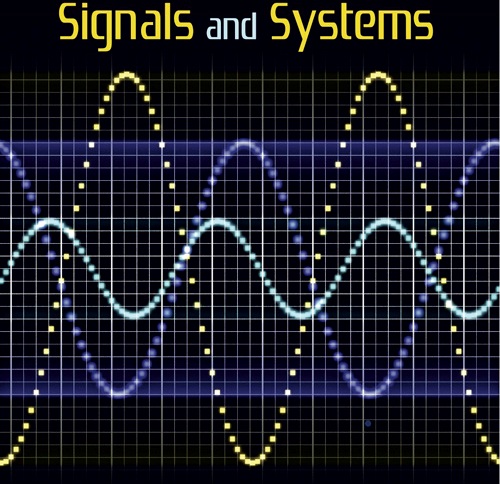SIGNALS and SYSTEMS LAB VIVA Questions Answers :-
1. What is meant by step response of the DT system?
The output of the system y(n) is obtained for the unit step input u(n) then it is said to be step response of the system.
2. Define Transfer function of the DT system.
The Transfer function of DT system is defined as the ratio of Z transform of the system output to the input. That is , H(z)=Y(z)/X(z).
3. Define impulse response of a DT system.
The impulse response is the output produced by DT system when unit impulse is applied at the input.The impulse response is denoted by h(n). The impulse response h(n) is obtained by taking inverse Z transform from the transfer function H(z).

4. State the significance of difference equations.
The input and output behaviour of the DT system can be characterized with the help of linear constant coefficient difference equations.
5. Write the difference equation for Discrete time system.
The general form of constant coefficient difference equation is, Here n is the order of difference equation. x(n) is the input and y(n) is the output.
6. Define frequency response (or) transfer function of the DT system.
The frequency response of the system is obtained from the Transfer function by replacing z = e jω
ie, H(z)=Y(z)/X(z), Where z = e jω
7. Give the state equations for LTI DT systems.
State equations: q (n+1) = A q(n) + b x(n) and y(n) = c q(n) + D x(n)
Where, A=[-a1 –a2] b=[1] c=[(b1-a1) (b2-a2)] and D=[1]
[1 0 ] [0]
8. What are the blocks used for block diagram representation?
The block diagrams are implemented with the help of signal multipliers, adders, delay elements, time advance elements and constant multipliers.
9. State the significance of block diagram representation.
The LTI systems are represented with the help of block diagrams. The block diagrams are more effective way of system description. Block Diagrams indicate how individual calculations are performed. Various blocks are used for block diagram representation.
10.What are the properties of convolution?
i.Commutative
ii.Assosiative.
iii.Distributive
11.State the Commutative properties of convolution?
Commutative property of Convolution is, x(n)*h(n) = h(n)*x(n)
12.State the Associative properties of convolution
Associative Property of convolution is, [x(n)*h1n)]*h2(n)=x(n)*[h1(n)*h2(n)]
13. State Distributive properties of convolution
The Distributive Property of convolution is,
{x(n)*[h1(n)+ h2(n)]}= [x(n)*h1(n) + x(n)*h2(n)]
14. Define causal LTI DT system.
For a LTI system to be causal if h(n)=0, for n<0.
15. How the discrete time system is represented?
The DT system is represented either Block diagram representation or difference equation representation.
16. What are the classification of the system based on unit sample response?
a. FIR (Finite impulse Response) system.
b. IIR ( Infinite Impulse Response) system.
17. What is meant by FIR system?
If the system have finite duration impulse response then the system is said to be FIR system.
18. What is meant by IIR system?
If the system have infinite duration impulse response then the system is said to be FIR system.
19. What is recursive system?
If the present output is dependent upon the present and past value of input then the system is said to be recursive system.
20. What is Non recursive system?
If the present output is dependent upon the present and past value of input and past value of output then the system is said to be non-recursive system.
21.What is the difference between recursive and non recursive system
A recursive system have the feed back and the non recursive system have no feed back.And also the need of memory requirement for the recursive system is less than non recursive system.
22. Define realization structure.
The block diagram representation of a difference equation is called realization structure.These diagram indicate the manner in which the computations are performed.
23.What are the different types of structure realization.
i.Direct form I
ii. Direcct form II
iii. Cascade form
iv. Parallel Form.
24. What is natural response?
This is output produced by the system only due to initial conditions . Input is zero for natural response. Hence it is also called zero input Response.
25. What is zero input Response?
This is output produced by the system only due to initial conditions. Input is zero for zero input response.
26. What is forced response?
This is the output produced by the system only due to input. Initial conditions are considered zero for forced response.It is denoted by y (f ) (n).
27. What is complete response?
The complete response of the system is equal to the sum of natural response and forced response .Thus initial conditions as well as input both are considered for complete response.
28. What are the steps involved in calculating convolution sum?
The steps involved in calculating sum are
i.Folding
ii.Shifting
iii.Multiplication
iv.Summation
29. Give the transfer function using state variables.
H(z) = Y(z) / X(z) = c ( zI – A ) -1 b + D
Where, A=[-a1 –a2] b=[1] c=[(b1-a1) (b2-a2)] and D=[1]
[1 0 ] [0]